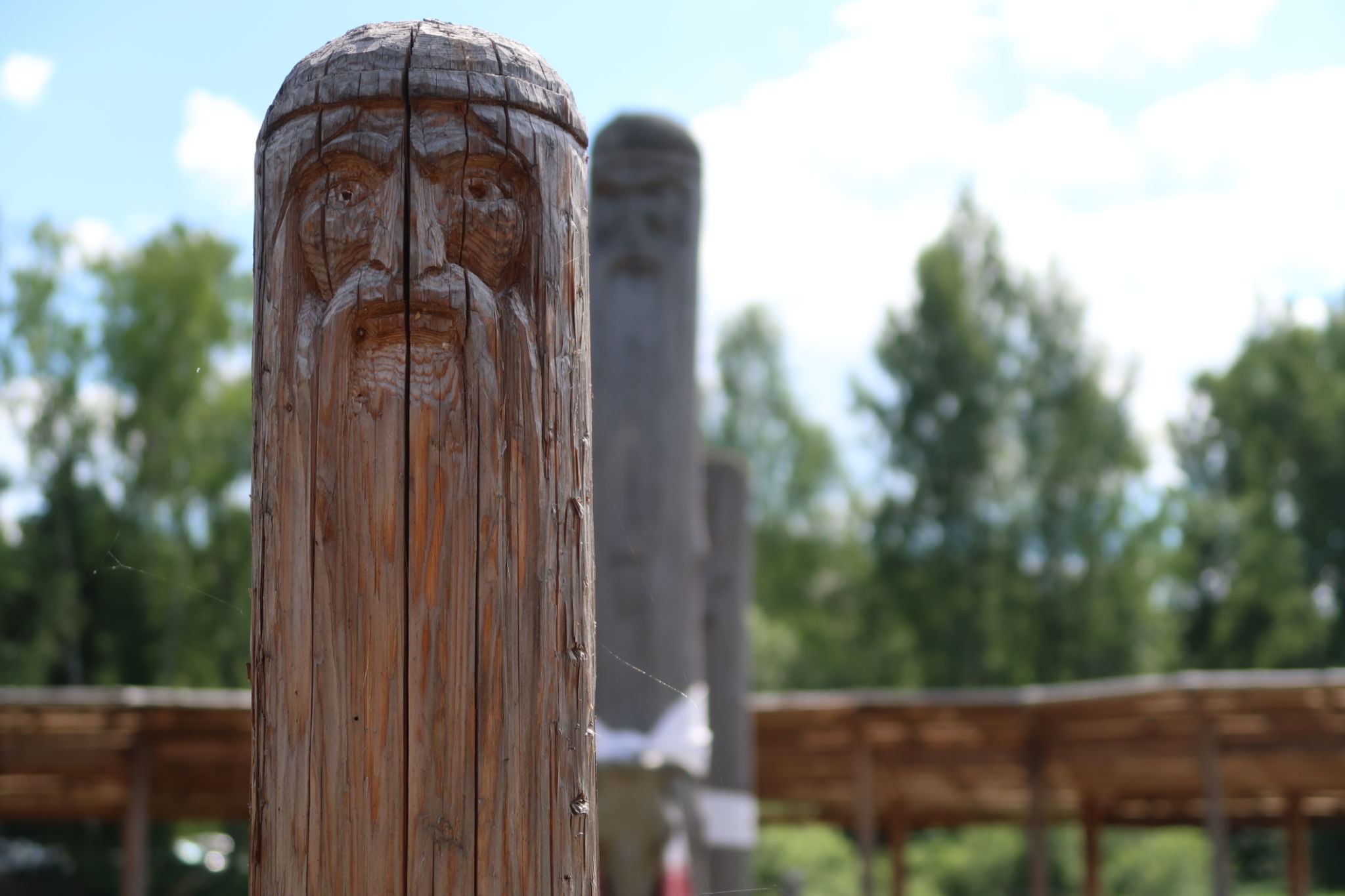Bowing to the Divine: Kneeling and Prostration in Historical Germanic Heathenry
One of the more persistent modern myths about ancient Germanic Heathenry is the idea that our ancestors never knelt or prostrated themselves before their gods. The assumption, often rooted in an understandable reaction against Christian liturgical forms, is that a "free man" in the Heathen worldview would never debase himself before any being—even a god. Yet when we turn to historical sources, a different picture emerges. There is compelling evidence that ancient Germanic peoples did in fact kneel, bow, and even fully prostrate themselves in reverence to divine powers and spiritual forces. This article explores that evidence and seeks to restore a fuller understanding of ancient piety.
Tacitus and the Suebi: Humbling Before the Divine
One of the earliest and most cited sources about Germanic religious practice is the Roman historian Tacitus, writing in the late 1st century CE. In his ethnographic work Germania, Tacitus describes the religious behavior of the Suebi, a large Germanic tribal group. He notes:
They consider it unworthy of the grandeur of the celestial beings to confine them within walls or to liken them to any human form; they consecrate groves and woods, and call by the names of gods that hidden presence which they behold only with the eye of reverence. (Germania, 9)
While this quote is often cited to emphasize the aniconic nature of early Germanic worship, less attention is paid to the physical posture of reverence implied by Tacitus' choice of words. The Latin phrase venerabundi oculi (reverent or worshipful eyes) implies physical postures of submission or awe, including lowering the body or head in reverence. In Roman contexts, such reverence was often expressed through kneeling or bowing. Tacitus also documents that "Reverence also in other ways is paid to the grove. No one enters it except bound with a chain, as an inferior acknowledging the might of the local divinity. If he chance to fall, it is not lawful for him to be lifted up, or to rise to his feet; he must crawl out along the ground."
It is clear from Tacitus’ description that not only did the Germanic tribes accept ritual prostration, it was actually required under certain circumstances specifically as a demonstration of the person’s inferior position to the Deity in question. There is no ambiguity about the expected power dynamic nor the appropriate bodily response here.

Ibn Fadlan and the Rus: Full Prostration Before the Idol
Perhaps the most direct account of prostration in a Germanic cultural context comes from Ahmad Ibn Fadlan, a 10th-century Arab envoy who encountered the Rus, a Norse-Germanic people operating along the Volga River. In his travel narrative, he recounts a ritual scene involving a wooden idol:
He prostrates himself before the large idol and says, ‘Oh my Lord, I have come from a distant land, bringing so many girls of such-and-such price, and so many sables…’ and he continues to speak until he has listed everything he has brought. Then he says: ‘I have brought this offering,’ and he places it before the idol. Then he says, ‘I wish you to do me the favor of sending me a merchant who has many dinars and dirhams who will buy everything I want and not argue with me.’ (Risala, translated by James E. Montgomery)
This is not a metaphorical bowing, but full sujūd—prostration with the body low to the ground, forehead to earth—a form of worship common in Near Eastern religions and clearly visible to Ibn Fadlan as analogous. That the Rus would perform such a posture before a god-image speaks volumes about the reverence and submission appropriate to the divine in their worldview.

Archaeological Echoes of Veneration
Archaeology also offers subtle but suggestive evidence of bodily worship practices. The placement of votive offerings in bogs, lakes, and groves—such as weapons bent and thrown into peat bogs or miniature tools buried in ritual deposits—suggests ritual acts that included physical gestures of humility and submission. While the act of depositing these offerings itself does not prove kneeling or prostration, the associated context—especially when combined with evidence from contemporary cultures—strengthens the case for postural reverence.
In particular, the Oseberg and Gokstad ship burials in Norway contain traces of ritualized death and offerings to the divine, suggesting a theology in which divine beings are not only honored but also petitioned through both ritual and physical submission.

Comparative Indo-European Practice
It is also important to consider the broader Indo-European context. Vedic and Hellenic traditions—close linguistic and cultural cousins to Germanic peoples—both include kneeling, bowing, and prostration before gods as standard acts of worship. The Greeks knelt and kissed the earth in reverence to their gods; the Indo-Aryans performed full pranama before their deities. It would be a remarkable outlier for the Germanic peoples to have entirely lacked such gestures of reverence.
Christian Influence or Continuity?
Some modern Heathens assume that kneeling is purely a Christian import. While Christianity certainly codified and expanded postural piety, it did not invent it. Rather, it absorbed and recontextualized existing Near Eastern and Indo-European practices. The error lies in treating kneeling as a uniquely Christian act, when it is in fact a deeply human one—arising in moments of awe, supplication, and reverence across cultures.
Conclusion: Rethinking Germanic Piety
The idea that historical Heathens never knelt or bowed before their gods is not supported by the evidence. While pride and personal honor were deeply important cultural values, they did not preclude gestures of reverence. Rather, those gestures—kneeling, bowing, and even full prostration—were likely seen as appropriate acts before the divine, as long as they were voluntary and sincere.
Recovering this aspect of ancestral practice does not mean we must imitate every motion exactly as described in medieval sources. But it does mean being honest about the past, and recognizing that reverence has always included the body. To kneel before a god is not to surrender your worth, but to honor theirs.

Suggested Sources for Further Reading:
Tacitus, Germania (translated by J.B. Rives)
Ahmad Ibn Fadlan, Mission to the Volga (translated by James E. Montgomery)
H.R. Ellis Davidson, Gods and Myths of Northern Europe
Neil Price, The Viking Way: Magic and Mind in Late Iron Age Scandinavia
Stefan Brink and Neil Price (eds.), The Viking World